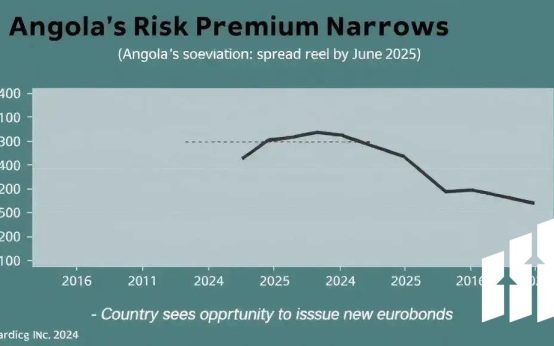How to diversify your investment portfolio involves spreading investments across various asset classes and sectors, regularly reviewing and rebalancing to reduce risk and enhance potential returns while avoiding common mistakes like overdiversification and ignoring fees.
How to diversify your investment portfolio can seem overwhelming, but it’s key to managing risk and growing your money. Ever wondered if spreading your investments really makes a difference? Let’s explore practical ways to make diversification work for you.
understanding diversification and its benefits
Diversification is a fundamental investment strategy that involves spreading your money across different types of assets to reduce risk. Instead of putting all your funds into a single stock or sector, diversification helps protect you from big losses if one investment performs poorly.
Why is diversification important? When you diversify, the negative performance of some assets can be balanced by positive returns in others. This balance helps smooth out the ups and downs of the market and can lead to more stable returns over time.
How diversification reduces risk
Different asset classes, such as stocks, bonds, and real estate, often react differently to the same economic event. For example, when stocks fall, bonds may rise or stay stable. By holding a mix, you can avoid heavy losses and preserve your capital.
Additional benefits of diversification
Besides risk reduction, diversification can improve your portfolio’s growth potential. Investing in a variety of sectors and geographic regions opens opportunities to benefit from different economic trends and market cycles.
Remember, diversification does not guarantee profits or completely eliminate losses, but it is a smart way to manage uncertainty and build a resilient investment portfolio over time.
assessing your current investment portfolio

Assessing your current investment portfolio is a critical step in achieving a well-diversified portfolio. Begin by reviewing each investment’s performance, risk level, and how it fits your financial goals. Use statements and tools provided by your broker or financial advisor to get a clear picture.
Analyze asset allocation
Identify the percentage of your investments in various asset classes like stocks, bonds, cash, and others. Understanding your allocation helps determine if you are too concentrated in one area, which may increase risk.
Evaluate risk tolerance
Reflect on how much loss you can comfortably withstand. Your risk tolerance may change over time based on age, income, and financial goals. A portfolio aligned with your tolerance supports better decision-making during market fluctuations.
Check for overlaps and gaps
Look for investments that are similar and inadvertently increase risk exposure, such as multiple stocks in the same sector. Also, identify any gaps where you might be missing exposure, like international markets or bonds.
Assess fees and costs
Review the fees associated with your investments. High costs can eat into your returns, so it is beneficial to compare expenses and consider low-cost alternatives without sacrificing quality.
Regularly assessing your portfolio ensures it remains balanced and aligned with your changing financial needs.
different asset classes to consider
When diversifying your investment portfolio, it’s important to understand the different asset classes available. Each class has unique characteristics, risks, and potential returns.
Stocks
Stocks represent ownership in a company. They offer the potential for high returns but come with higher risk, especially in the short term. Investing in a mix of large-cap, mid-cap, and small-cap stocks can provide varying levels of growth and stability.
Bonds
Bonds are loans you give to governments or companies. They tend to be less risky than stocks and provide steady income through interest payments. Bonds help balance your portfolio and reduce overall volatility.
Real Estate
Investing in real estate can provide income through rent and potential value appreciation. Real estate often behaves differently from stocks and bonds, adding important diversification benefits.
Commodities
These include physical goods like gold, oil, and agricultural products. Commodities can act as a hedge against inflation and may move differently than traditional assets during market changes.
Cash and Cash Equivalents
These are liquid assets like savings accounts and money market funds. While offering low returns, cash provides safety and flexibility for buying opportunities or emergencies.
Considering a combination of these asset classes tailored to your risk tolerance and goals can strengthen your portfolio’s diversification.
steps to build a diversified portfolio

Building a diversified portfolio involves several practical steps to ensure your investments are spread across different assets effectively. Start by setting clear financial goals and understanding your risk tolerance. These will guide your choices throughout the process.
1. Assess your current investments
Review what you already own to identify concentrations and gaps. Knowing this helps in deciding where to add new assets to balance your portfolio.
2. Choose a mix of asset classes
Include stocks, bonds, real estate, and other assets based on your goals. This combination reduces risk because different assets react differently to market changes.
3. Diversify within each asset class
Don’t just invest in one stock or bond fund. Spread investments across sectors, industries, and geographic regions to minimize risks related to specific markets.
4. Use low-cost investment options
Consider index funds or exchange-traded funds (ETFs) to gain broad exposure without high fees. Lower costs can improve your portfolio’s overall returns.
5. Monitor and rebalance regularly
Over time, some investments will grow faster than others, altering your portfolio’s balance. Rebalancing involves buying or selling assets to maintain your desired allocation.
Following these steps helps create a resilient portfolio designed to withstand market fluctuations and meet your financial objectives.
common mistakes to avoid when diversifying
When diversifying your investment portfolio, it’s important to avoid common mistakes that can reduce the effectiveness of your strategy.
Overdiversification
While diversification helps manage risk, too many investments can lead to overdiversification. This can dilute potential returns and make managing your portfolio harder.
Ignoring fees and costs
High fees on certain funds or frequent trading can eat away at profits. Always consider expenses when choosing investment options to keep costs low.
Lack of regular rebalancing
Market changes can shift your ideal allocation over time. Forgetting to rebalance means your portfolio may become riskier or less aligned with your goals.
Focusing only on returns
Chasing high returns without considering risk can leave you exposed to heavy losses. A balanced approach includes understanding the risk level of each investment.
Not considering your risk tolerance
Investing in assets that don’t align with your comfort with risk can cause anxiety and poor decision-making. Assess your risk tolerance realistically.
Avoiding these pitfalls helps ensure your diversification strategy works as intended and your portfolio grows steadily with manageable risks.
Key takeaways for diversifying your investment portfolio
Diversifying your investment portfolio is essential to managing risk and aiming for steady growth. By spreading your investments across different asset classes and regularly reviewing your portfolio, you can build a more balanced and resilient financial plan.
Keep in mind common mistakes like overdiversification, ignoring fees, and failing to rebalance. Staying informed and disciplined will help your investment strategy stay strong over time.
Remember that successful diversification is a journey – it requires continual attention and adjustment to meet your evolving goals and risk tolerance. Start small, stay consistent, and you’ll be on the right path to securing your financial future.
FAQ – Common questions about diversifying your investment portfolio
What is diversification in investing?
Diversification means spreading your investments across different asset classes to reduce risk and improve potential returns.
Why is diversification important?
It helps protect your portfolio from big losses by balancing the ups and downs of various investments.
How often should I review my portfolio?
You should review your portfolio regularly, at least once a year, and rebalance it to maintain your desired asset allocation.
Can diversification eliminate all investment risks?
No, diversification helps manage risk but does not eliminate it completely. All investments carry some level of risk.
What are common mistakes to avoid when diversifying?
Avoid overdiversification, ignoring fees, lack of rebalancing, focusing only on returns, and not considering your risk tolerance.
How can I start building a diversified portfolio?
Start by assessing your current investments, set clear goals, choose a mix of asset classes, diversify within those classes, use low-cost options, and monitor your portfolio regularly.


 Miran Highlights Dual Goals of Fed and Interest Rate Outlook
Miran Highlights Dual Goals of Fed and Interest Rate Outlook  Are You a Robot? Unusual Activity Detected on Bloomberg
Are You a Robot? Unusual Activity Detected on Bloomberg  Keir Starmer Leads Business Delegation to India for Trade Pact
Keir Starmer Leads Business Delegation to India for Trade Pact  Takaichi Appoints Ex-Finance Minister as Secretary General of LDP
Takaichi Appoints Ex-Finance Minister as Secretary General of LDP  Argentina Continues Dollar Sales Amid Weakened Peso Crisis
Argentina Continues Dollar Sales Amid Weakened Peso Crisis  White House Calls on Democrats to Resolve Ongoing Government Shutdown
White House Calls on Democrats to Resolve Ongoing Government Shutdown